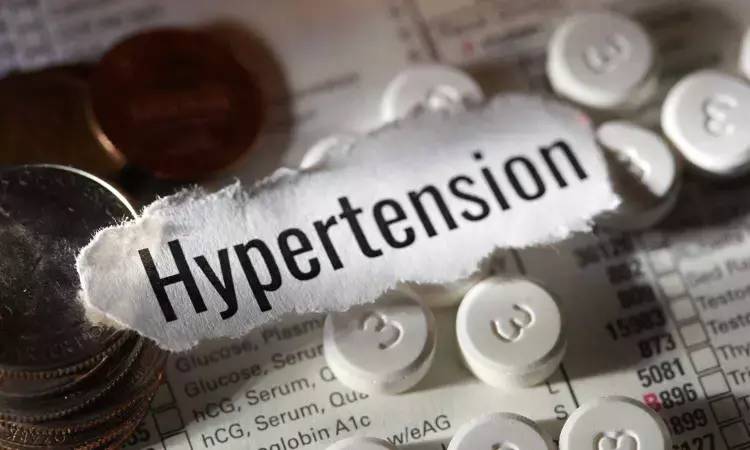- Home
- Medical news & Guidelines
- Anesthesiology
- Cardiology and CTVS
- Critical Care
- Dentistry
- Dermatology
- Diabetes and Endocrinology
- ENT
- Gastroenterology
- Medicine
- Nephrology
- Neurology
- Obstretics-Gynaecology
- Oncology
- Ophthalmology
- Orthopaedics
- Pediatrics-Neonatology
- Psychiatry
- Pulmonology
- Radiology
- Surgery
- Urology
- Laboratory Medicine
- Diet
- Nursing
- Paramedical
- Physiotherapy
- Health news
- Fact Check
- Bone Health Fact Check
- Brain Health Fact Check
- Cancer Related Fact Check
- Child Care Fact Check
- Dental and oral health fact check
- Diabetes and metabolic health fact check
- Diet and Nutrition Fact Check
- Eye and ENT Care Fact Check
- Fitness fact check
- Gut health fact check
- Heart health fact check
- Kidney health fact check
- Medical education fact check
- Men's health fact check
- Respiratory fact check
- Skin and hair care fact check
- Vaccine and Immunization fact check
- Women's health fact check
- AYUSH
- State News
- Andaman and Nicobar Islands
- Andhra Pradesh
- Arunachal Pradesh
- Assam
- Bihar
- Chandigarh
- Chattisgarh
- Dadra and Nagar Haveli
- Daman and Diu
- Delhi
- Goa
- Gujarat
- Haryana
- Himachal Pradesh
- Jammu & Kashmir
- Jharkhand
- Karnataka
- Kerala
- Ladakh
- Lakshadweep
- Madhya Pradesh
- Maharashtra
- Manipur
- Meghalaya
- Mizoram
- Nagaland
- Odisha
- Puducherry
- Punjab
- Rajasthan
- Sikkim
- Tamil Nadu
- Telangana
- Tripura
- Uttar Pradesh
- Uttrakhand
- West Bengal
- Medical Education
- Industry
No Clear Winner: Three Dual-Drug Hypertension Therapies Work Equally Well in Indian Adults, TOPSPIN Trial Finds

India: A large multicentre clinical trial conducted in India has found that three commonly prescribed dual-drug regimens for high blood pressure are equally effective and well-tolerated in South Asian adults. The findings, published in Nature Medicine, provide important evidence to guide hypertension management in the region, where cardiovascular disease remains a major cause of illness and death.
Led by Dorairaj Prabhakaran and colleagues from the Centre for Chronic Disease Control in New Delhi, the study aimed to address a significant evidence gap in optimising combination therapy for South Asian patients. While dual therapy is often recommended when single medications fail to achieve adequate blood pressure control, there has been little comparative data on which combinations work best in this population.
The trial enrolled 1,981 Indian adults aged 30 to 79 years, with a mean age of 52 years. Participants had either a sitting systolic blood pressure (SBP) of 150–179 mmHg while untreated, or an SBP of 140–159 mmHg while already on a single medication. They were randomly assigned, in equal proportions, to receive one of three single-pill combinations: amlodipine–perindopril, perindopril–indapamide, or amlodipine–indapamide. The primary goal was to measure changes in 24-hour ambulatory SBP after six months of treatment.
The study led to the following findings:
- A total of 1,637 participants completed the 24-hour blood pressure monitoring.
- All three treatment combinations resulted in similar and significant reductions in ambulatory and clinic blood pressure readings.
- Average reduction in 24-hour ambulatory BP was about 14 mmHg systolic and 8 mmHg diastolic.
- Office BP decreased by roughly 30 mmHg systolic and 14 mmHg diastolic.
- Approximately 70% of participants in each group achieved target BP control, defined as sitting BP below 140/90 mmHg, after six months.
- Secondary outcomes, including daytime and nighttime BP readings, hypertension control rates, and tolerability, showed no significant differences among the treatment groups.
- All three regimens were well-tolerated, with no unexpected safety issues observed.
The trial, known as the TOPSPIN trial, is one of the largest head-to-head comparisons of dual therapy in Indian patients. According to the authors, the results suggest that any of these combinations—amlodipine–perindopril, perindopril–indapamide, or amlodipine–indapamide—can be considered equally valid first choices for initiating dual therapy in South Asian adults with hypertension.
Given that elevated blood pressure is a leading risk factor for heart attacks, strokes, and kidney disease, the researchers believe the findings will help clinicians tailor treatment strategies without being restricted to one specific combination. The comparable efficacy and safety profiles of these regimens may also allow flexibility based on patient preferences, cost, and availability.
By providing robust, region-specific evidence, the study addresses a critical gap in hypertension management for South Asians, both in India and across the global diaspora, potentially improving blood pressure control and reducing cardiovascular disease burden.
Reference:
Prabhakaran, D., Roy, A., Chandrasekaran, A. M., Kondal, D., Mukherjee, S., Kiru, G., Singh, K., Salwa, H., Sobitharaj, E. C., Lobo, A. S., Mahajan, G., Mohan, B., Khanna, A., Malviya, A., Patil, S. G., Abichandani, V. K., Singh, B., Gupta, B. K., Yellapantula, B., . . . Poulter, N. R. (2025). Comparison of dual therapies for hypertension treatment in India: A randomized clinical trial. Nature Medicine, 1-7. https://doi.org/10.1038/s41591-025-03854-w
Dr Kamal Kant Kohli-MBBS, DTCD- a chest specialist with more than 30 years of practice and a flair for writing clinical articles, Dr Kamal Kant Kohli joined Medical Dialogues as a Chief Editor of Medical News. Besides writing articles, as an editor, he proofreads and verifies all the medical content published on Medical Dialogues including those coming from journals, studies,medical conferences,guidelines etc. Email: drkohli@medicaldialogues.in. Contact no. 011-43720751


